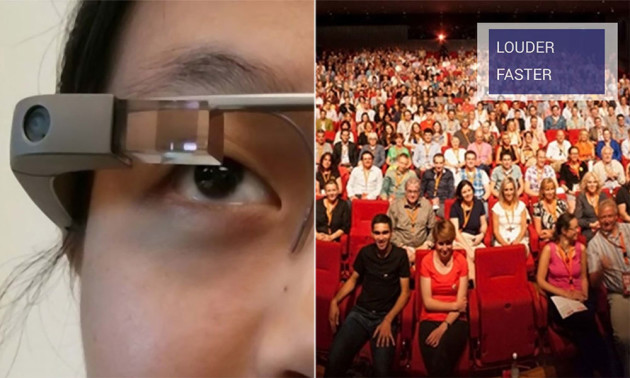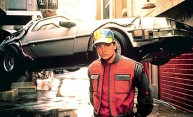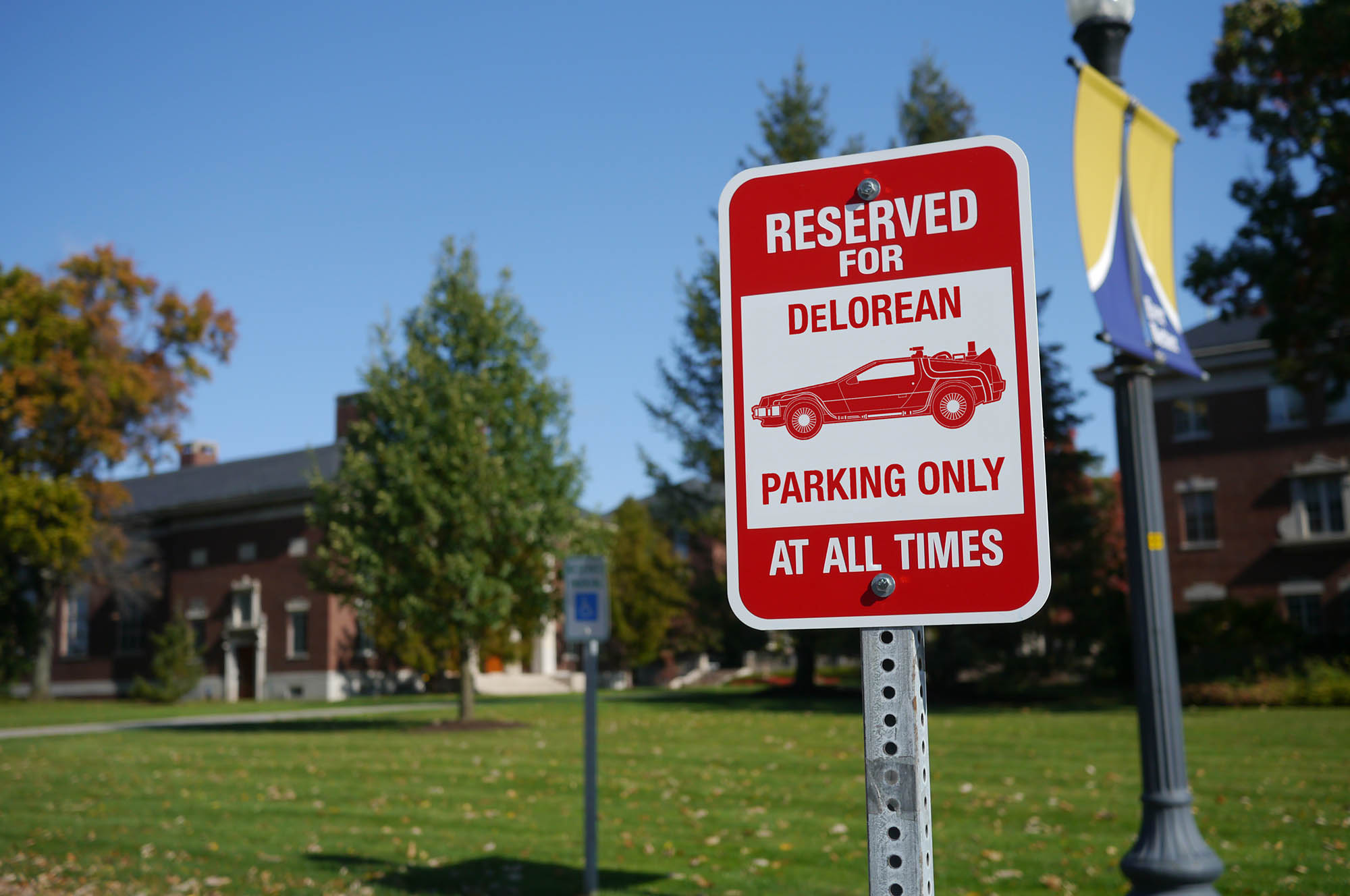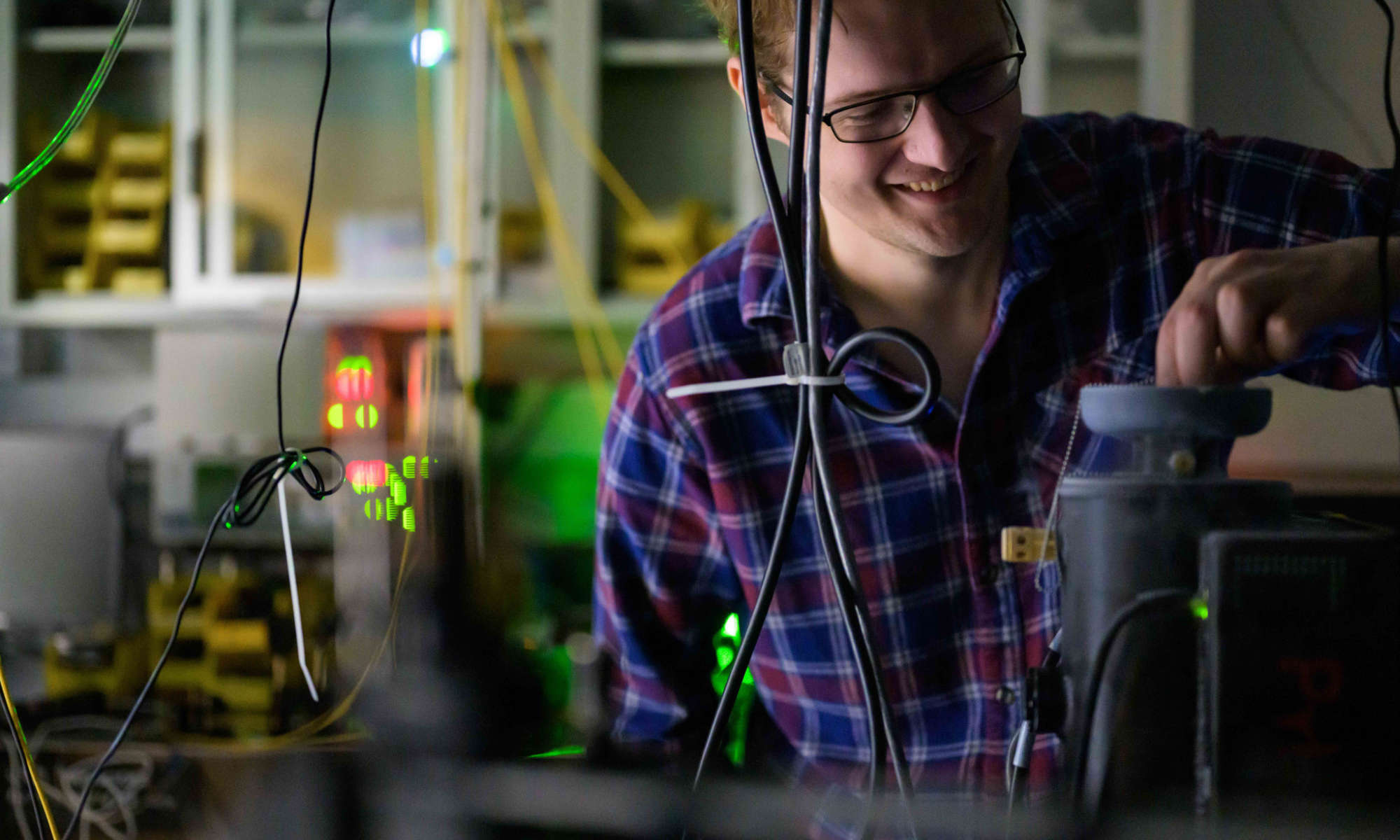In the Back to the Future Part II movie, Dr. Emmett Brown convinces Marty McFly and his girlfriend Jennifer to travel 30 years into the future from 1985. The trio uses the DeLorean time machine to arrive on October 21, 2015.
In honor of the film, the date has been designated “Back to the Future Day.” Today we’re looking at some of the movie’s technological and cultural predictions for 2015. How do they stack up with the present day? And what is the University of Rochester doing to help make the future a reality?

Video glasses
In the movie’s version of 2015, video glasses are used to watch television programs without a large screen.
Today’s “smart glasses” can do that and much more. In fact, wearable tech can even help you with your public speaking by giving you real-time feedback, as computer science professor Ehsan Hoque and his team have shown.
Fusion generator
The Mr. Fusion Home Energy Reactor was the power source used by the DeLorean in 2015.
Mr. Fusion ran on household garbage, but in Rochester we’re instead aiming for fusion energy by coupling laser energy and fusion fuel. Maybe Doc Brown would like to visit the Laboratory for Laser Energetics?
 Flying cars
Flying cars
Where Marty and Doc Brown were going, they didn’t need roads. And while today’s cars are starting to park themselves and even drive themselves, flying cars still seem a long way off in 2015, as astronomy professor Adam Frank laments.
Rejuvenation clinic
In 2015, Doc tells Marty, “I went to a rejuvenation clinic and got a whole natural overhaul. They took out some wrinkles, did hair repair, changed the blood, added a good 30 to 40 years to my life. They also replaced my spleen and colon. What do you think?”
Plastic surgery, organ donations, and hair transplants aside, we’re a ways off from the one-stop-shop rejuvenation clinic Doc mentions in the movie. In the meantime, our researchers and scientists at the Rochester Aging Research Center are investigating mechanisms that promote longevity as well as extend lifespan and health span.
Cubs win the World Series
This one could actually happen! The Cubs go into tonight’s National League Championship Series needing a win to avoid being swept by the Mets. English lecturer and baseball historian Curt Smith takes a look at whether this could be the Cubs’ year.

Clock tower
Although it’s only been around since 2000, we promise to save the clock tower in Dandelion Square!





